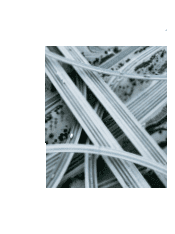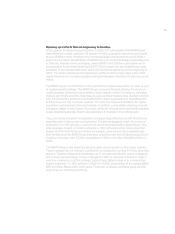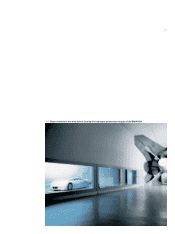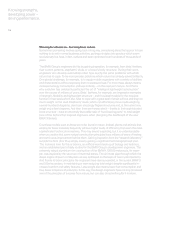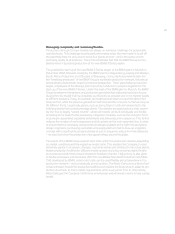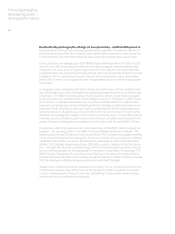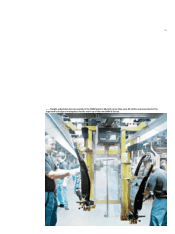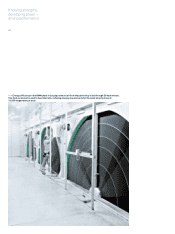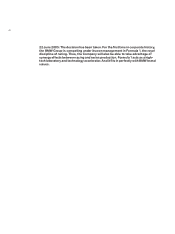BMW 2005 Annual Report Download - page 166
Download and view the complete annual report
Please find page 166 of the 2005 BMW annual report below. You can navigate through the pages in the report by either clicking on the pages listed below, or by using the keyword search tool below to find specific information within the annual report.18
Knowing strengths,
developing power –
driving performance.
Striving for advances – learning from nature.
Sometimes pioneering involves going back a long way, considering ideas that appear to have
nothing to do with normal business activities, putting principles into practice which seem
revolutionary but have, in fact, evolved and been optimised over hundreds of thousands of
years.
The BMW Group’s engineers do this by gaining inspiration, for example, from birds’ feathers,
river current patterns, elephants’ skulls or a horse’s body structure. During their work,
engineers who develop automobiles often face exactly the same problems with which
nature has to cope. To be more precise: problems which nature has already solved brilliantly.
One pivotal challenge, for example, is to equip mobile organisms with a variety of abilities
and characteristics without exposing them to excessive load. For more mass always means
increased energy consumption and less mobility – on the road as in nature. And that is
why evolution has constantly perfected the art of “intelligent lightweight construction”
over the course of millions of years. Birds’ feathers, for example, are impressive examples
of strength, flexibility and lightweight structure – and thus ideal models for the required
function of rear axles which also have to cope with a great deal of strain without exerting too
much weight on the road. Elephants’ skulls, which can effortlessly move loads weighing
several hundred kilograms, also have amazingly filigree structures and, at the same time,
weigh only a few kilograms. And then there are horses which – thanks to their sophisticated
bone structure – have an extremely favourable ratio of “load-bearing parts” to total weight
(one of the factors that inspired engineers when designing the dashboard of the new
BMW 3 Series).
Countless models such as these are to be found in nature. Indeed, plants and animals that
employ far fewer materials frequently achieve higher levels of efficiency than even the most
sophisticated technical innovations. This may sound surprising, but it is understandable
when you realise that some natural construction principles have millions of years of testing
and continuous improvement behind them. Gaining inspiration from the “research laboratory”
outside the front door thus simply means gaining a significant technological head start.
The technical term for this is bionics, an artificial word made up of biology and technics,
and an established part of daily routine for the BMW Group’s development engineers. The
extremely robust aluminium rim construction of the BMW K1200 S motorcycle, for exam-
ple, was inspired by the structure of mammal bones. The air intake pipe through which the
diesel engine draws in combustion air was optimised on the basis of river current patterns.
And thanks to bionic principles the engineers have also succeeded, in the current BMW 3
and 5 Series sedans, in maintaining or even reducing total weight despite significantly in-
creased comfort and safety features. Less weight also means lower fuel consumption and
thus fewer emissions of pollutants. In this way, the design engineers have not only borrowed
one of the principles of success from nature, but can also do something for it in return.



